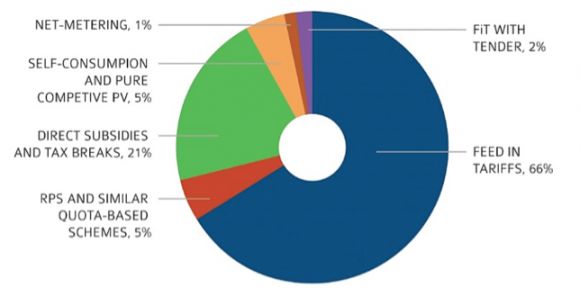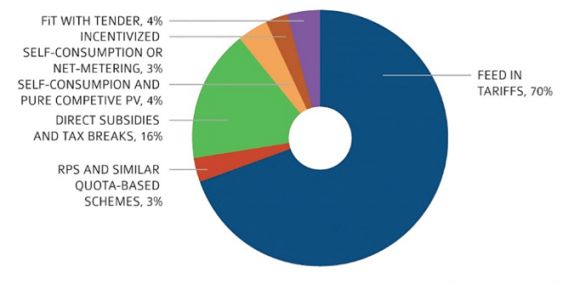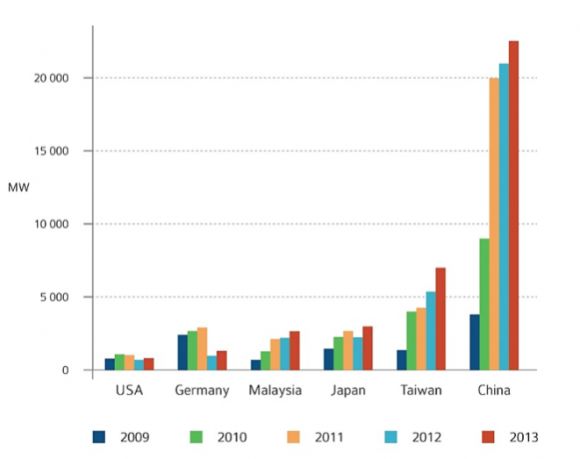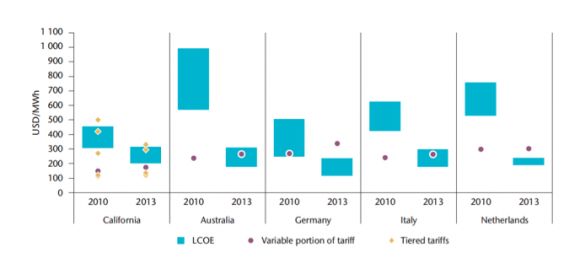Electricity is a tool that allows us to perform magic, from powering our cell phones to heating our toaster ovens, from lighting our homes to scanning our brains in microscopic detail. The modern world could not exist without widespread access to electricity.
Electricity has become a basic human need. It’s not quite up there with air, water, food and shelter, but it’s a close fifth. It’s also the basis for enormous economic development around the world.
To help developing nations become more developed, electricity is a key component. This is uncontroversial. What is more controversial is the idea that electricity policy can be a tool for economic development in developed nations. This article will explore the possibilities for economic development in countries like the U.S., including the ability to mitigate the growing inequality in our country.
Traditionally, the electricity sector has been a regulated monopoly, with just one company in each service territory providing power to customers and reaping the economic benefits. This is known as the “regulatory compact,” and it was created because it made little sense to have more than one company construct and operate power lines in any given area.
Deregulation in the 1990s in California and other jurisdictions changed this model somewhat by allowing third parties to generate and sell power, while the traditional utility maintained control of the transmission system and billing of customers. Deregulation is more aptly described as “de-monopolization,” because it required that the generation market be opened to non-utility generators. This move expanded the economic benefits from our electricity sector somewhat, but it still kept profits entirely within the corporate sector -- it was just different big companies that were allowed to benefit.
The next major shift came with the advent of net metering, which allows homeowners and businesses (any end-use customer) to install solar panels or other distributed generation on their property to provide power onsite and use the grid as a type of battery. Excess power is sent onto the grid and banked for that customer-generator. The customer-generator is then able to take that power back when, for example, the solar panels aren’t producing enough power for onsite needs. Customer-generators aren’t generally paid for excess power under net metering policies, but the bill credit (rather than a payment) provided in California and some other jurisdictions is equivalent to the retail price of electricity.
Net metering has been extremely effective in some jurisdictions at spurring self-generation, particularly solar power. For example, the Australian province of South Australia went from almost no solar to penetration of 25 percent in just a few years purely through what is essentially a net metering policy (though it’s not called that). Nationwide, Australia has a remarkable 14 percent penetration rate for residential solar.
Net metering in California, the largest market in the U.S. for renewable energy, has been good but not stellar when compared to other jurisdictions. We are at about 1.4 percent household penetration, fully ten times less than Australia. The California Solar Initiative (CSI), created in 2006, is on track, however, to easily meet its goals before the 2020 deadline. The program goal is 3 gigawatts by 2016, and 2.3 gigawatts have already been installed.
Average costs have declined by 50 percent since 2008, falling to about $5/watt in California in 2014. The rebate program that is the heart of CSI is still in place, but the rebates are now minimal or nonexistent due to a gradual planned phaseout. Despite the phaseout of rebates, net-metered solar installations are still growing well in California.
Net metering has substantial economic development benefits that go far beyond than those seen with the de-monopolization of the utility generation model. Net metering allows homeowners and businesses to save money on power and spend that money elsewhere. Many customers who opt to purchase their systems (upfront or through a loan) will enjoy almost free electricity once those loans are paid off. And many homeowners and businesses can opt for net-metered solar today and pay less than they are already paying to the utility, with no down payment required in many cases.
Feed-in tariffs
The gold standard, however, for maximizing both the speed of development and the spread of economic development benefits is the feed-in tariff policy first pioneered by the United States in the late 1970s. President Carter signed the Public Utilities Regulatory Policy Act (PURPA) into law in 1978. This law required that utilities buy power from renewable energy and cogeneration facilities at the “avoided cost” price. Each state was allowed to implement PURPA as it saw fit, and most didn’t set pricing at levels sufficient to spur growth. California’s implementation was highly effective, however, and this policy led to the beginning of the boom in renewables we’re witnessing today around the world.
Today, much of the U.S. has gone sour on feed-in tariffs, despite their early success in the 1980s and 1990s. Even Germany, as I described in my last article, is moving away from FITs to some degree, and this is highly unfortunate. The perception is that FITs are insufficiently market-based because they don’t rely on prices bid by developers in defined auctions. The economic development benefits of feed-in tariffs are not discussed very much in the U.S., but this benefit is a major reason to support renewed and expanded feed-in tariff policies.
Rather than polling the marketplace with the extremely inefficient method of requiring bids from developers in a reverse auction process, like most U.S.-based programs today, FITs poll the marketplace by seeing how much interest is generated at a particular administratively-set FIT price. The price is then decreased over time in order to reach the desired level of development and to avoid windfall profits for developers. As I noted in the previous article, the size of the FIT market was perceived as too large after the country experienced three years in a row of about 7 gigawatts of new solar added, so policymakers decreased the prices for new contracts even further and achieved the desired slowdown in the market.
The FIT approach for polling the market is inherently no less market-friendly than a reverse auction process. And it is more efficient, because it provides far more certainty and transparency to bidders who can know the likely contract price in advance. In an auction process, bidders have no idea what price will win a contract even as they submit their bid.
Another key benefit of the FIT option is that size categories can be provided different prices. This can spur the market for, say, rooftop solar on large industrial roofs, or for smaller projects, barns and parking structures. Or lower prices can be provided for larger projects. Germany has also done this under its FIT program, and Germany’s solar sector is driven by a large number of smaller projects in addition to larger projects.
The economic development benefits of the FIT policy are thus spread widely because many landowners and even homeowners can benefit from selling power to the grid. Almost 40 percent of FIT solar systems in Germany are owned by homeowners or farm owners.
FITs around the world
I’m going to dive in a bit deeper now to look at the effectiveness of FITs around the world to demonstrate how effective FITs can be as an economic development tool.
First, it is important to keep in mind that a large majority of the world’s solar and wind power has been developed under FITs in various countries. Three of the four largest markets in 2013 and 2014 (China, Japan and Germany) are FIT markets. At No. 3, the U.S., relying on auctions and net metering, is an anomaly in terms of not having a significant FIT in place anymore.
The figure below shows the cumulative market for solar and the policies used to bring those megawatts on-line. Italy, No. 2, in installed solar capacity today, developed its market almost entirely under a FIT model.
FIGURE 1: IEA Analysis of Market Support Policies for Solar

Source: IEA Trends 2014 in Photovoltaic Applications
The second figure shows the policies for 2013, with FITs rising above the historical figure to 70 percent of all solar.
FIGURE 2: 2013 Policies Supporting Solar
Source: IEA
In terms of production of solar panels, another major source of economic benefit, the U.S. used to be a major producer of solar panels. But it has since lost its lead to other countries, particularly China and Taiwan in recent years. Solar PV production is on its way to becoming a $200 billion industry worldwide by 2020. If the U.S. wants to be a serious player in this increasingly large industry, it will need to change its policies. Spurring consumption of panels here at home would be a good first step.
FIGURE 3: Solar PV Production by Country

Source: IEA
Grid parity, the point at which solar costs the same as grid power, is the holy grail for solar power. A number of jurisdictions reached this critical milestone in 2013, including California, according to the International Energy Agency. This is substantial additional support for offering FITs for solar at the avoided cost, or similar policies to spur demand, in these and other countries.
What reason is there to oppose such policies when this price level would replace a polluting and outmoded generation model with a clean and sustainable energy source at no extra cost? When we consider the economic development benefits of FIT policies, expanding FITs here in the U.S. and elsewhere begins to look like a no-brainer.
FIGURE 4: IEA Analysis of Countries Attaining Solar Grid Parity in 2013

Source: IEA
IEA’s takeaway from its in-depth analysis of the potential for solar and various support policies is this: for solar to reach its potential, countries need to put in place clear, consistent and credible policies. The FIT policy is probably the best to provide those market signals, and its track record supports this conclusion.
Inequality and energy policy
Inequality of income is a growing problem in the U.S. The country is behind only Turkey and Chile among OECD nations in terms of inequality, which has been increasing steadily since 1968. By democratizing power generation and the economic benefits that come with such democratization, we will make some contribution to reducing this long-term trend toward greater and greater inequality.
In talking with others who were involved in creating many state and national policies with respect to solar, I’ve learned that the key energy policy concern in the U.S. has generally not been to spur the fastest development of renewable energy or to democratize the production of energy. Rather, the key concern has often been to ensure creation of policies that allow optimal monetization of financial services for solar. In other words, Wall Street has gotten its way in too many cases, at the expense (again) of Main Street.
It’s time to change our focus to policies that democratize power, can spur rapid development, and that spread the benefits of the solar revolution already underway far more widely than has been the case to date.
***
Tam Hunt is the owner of Community Renewable Solutions LLC, a renewable energy project development and policy advocacy firm based in Santa Barbara, California and Hilo, Hawaii.



